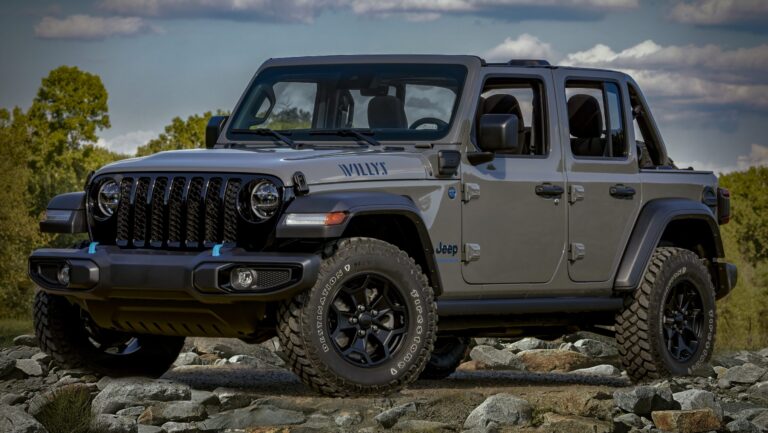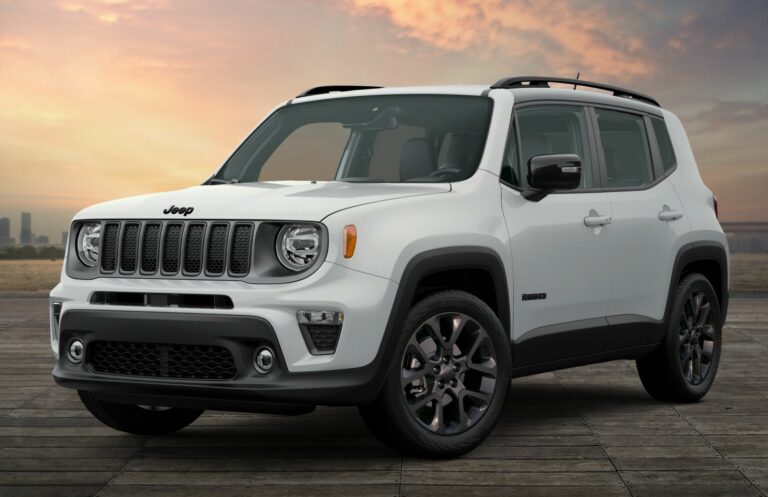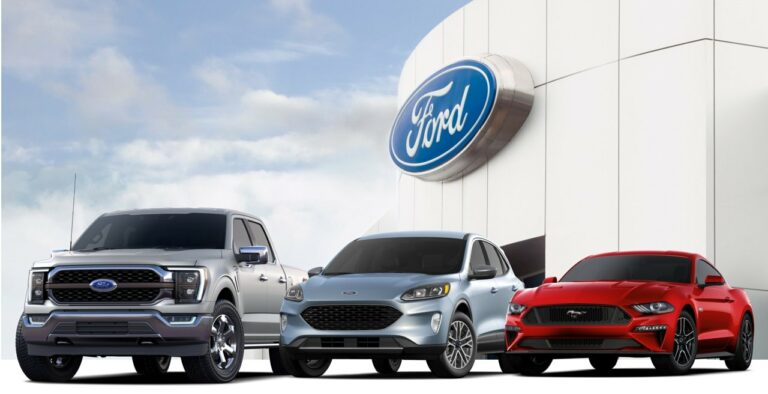Jeep JK Rubicon Front Axle For Sale: The Ultimate Upgrade for Your Off-Road Beast
Jeep JK Rubicon Front Axle For Sale: The Ultimate Upgrade for Your Off-Road Beast jeeps.truckstrend.com
For any serious Jeep JK Wrangler owner, the pursuit of superior off-road capability often leads to one crucial component: the front axle. While the standard Dana 30 found in Sport and Sahara models is adequate for light trails, it quickly becomes a limiting factor when venturing into more challenging terrain or running larger tires. This is where the Jeep JK Rubicon Front Axle emerges as the holy grail – a robust, factory-engineered upgrade that dramatically transforms a JK’s performance. Often available for sale as a standalone unit, acquiring a Rubicon front axle is one of the most impactful modifications you can make, providing enhanced strength, crucial traction, and peace of mind on the toughest trails.
This comprehensive guide will delve into everything you need to know about the Jeep JK Rubicon Front Axle, from its inherent advantages and what to look for when buying, to installation considerations and common queries. Whether you’re looking to replace a damaged axle, upgrade your non-Rubicon JK, or build a custom rig, understanding this vital component is key to unlocking your Jeep’s full potential.
Jeep JK Rubicon Front Axle For Sale: The Ultimate Upgrade for Your Off-Road Beast
Understanding the JK Rubicon Dana 44 Front Axle
At its core, the Jeep JK Rubicon front axle is a Dana 44, a significant step up from the Dana 30 found in other JK models. But it’s not just any Dana 44; it’s specifically engineered for the Rubicon’s legendary off-road prowess.
Key Features and Superiority:
- Dana 44 Strength: The Rubicon axle boasts a larger ring and pinion, thicker axle tubes (approximately 2.75 inches in diameter with 0.25-inch wall thickness compared to the Dana 30’s 2.5-inch diameter with 0.187-inch wall thickness), and generally more robust construction than the Dana 30. This translates to increased resistance against bending, breaking, and overall fatigue, especially under the stress of larger tires, heavy loads, and aggressive driving.
- Electronic Locking Differential (Tru-Lok): This is arguably the most significant feature. The Rubicon axle comes equipped with a factory electronic locker. With the flick of a switch (when integrated correctly), this system physically locks the differential, forcing both front wheels to spin at the same rate. This provides unparalleled traction in slippery, uneven, or extreme conditions where one wheel might lose contact with the ground. For non-Rubicon owners, adding this capability via an aftermarket locker can be costly and complex, making the factory solution highly desirable.
- Optimal Gearing: Most JK Rubicon front axles come standard with a 4.10 gear ratio. This gearing is ideal for running 35-inch tires and provides a substantial power band for both on-road cruising and off-road crawling. While Sport and Sahara models typically come with 3.21 or 3.73 ratios, the 4.10 gears in a Rubicon axle are perfectly matched for enhanced performance with larger tires, often eliminating the need for a costly re-gear of both axles if you plan to upgrade.
- Larger Knuckles and Steering Components: The Rubicon axle features beefier knuckles and often comes with stronger steering components, providing a more robust foundation for the larger tires and more demanding use cases that Rubicons are designed for.
- Direct Bolt-In Compatibility: For any Jeep JK Wrangler (2007-2018), a Rubicon front axle is a direct bolt-in replacement for the stock Dana 30. This makes the upgrade process relatively straightforward compared to custom axle swaps.

Benefits of Upgrading to a Rubicon Front Axle
The decision to invest in a Jeep JK Rubicon front axle for sale offers a multitude of advantages that significantly enhance your Jeep’s capabilities and your off-road experience:
- Unmatched Traction: The electronic locker is a game-changer. It allows you to maintain forward momentum over obstacles, through deep mud, or across slippery rocks where open differentials would leave you stranded.
- Superior Durability: Say goodbye to bent axle tubes, broken gears, or snapped axle shafts from pushing your limits. The Dana 44 design offers a substantial increase in strength, allowing you to confidently tackle more aggressive trails and run larger tires (up to 37 inches with proper reinforcement) without constant worry.
- Cost-Effective Upgrade Path: While a used Rubicon axle isn’t cheap, it often presents a more economical solution than purchasing a new aftermarket Dana 44, especially when factoring in the cost of adding an aftermarket locker and re-gearing a standard axle. You get factory reliability and integrated features.
- Optimized Performance with Larger Tires: If you’re planning to jump to 35-inch or 37-inch tires, the 4.10 gearing is already optimized, providing better power delivery and reduced strain on the drivetrain compared to higher (lower numerically) ratios.
- Increased Resale Value: A Rubicon axle upgrade is a highly desirable modification that can increase the resale value of your non-Rubicon JK, appealing to buyers looking for a more capable off-road rig.
- OEM Reliability: Unlike some aftermarket solutions, a factory Rubicon axle benefits from Jeep’s engineering and rigorous testing, ensuring a reliable and integrated system.
Who Needs a Rubicon Front Axle?
- JK Sport/Sahara Owners: If you own a non-Rubicon JK and aspire to tackle more challenging trails, run larger tires (35"+), or simply want the peace of mind of a stronger axle and lockers, this upgrade is essential.
- Damaged Rubicon Owners: If your existing Rubicon front axle has been damaged due to an accident, extreme off-roading, or component failure, finding a used replacement can be a more affordable alternative to a brand new unit.
- Custom Builders: For those building a highly customized JK, starting with a factory Rubicon Dana 44 provides a solid, known-good foundation that can be further reinforced or modified as needed.
Key Considerations When Buying a Used Rubicon Front Axle
Buying a used axle requires diligence. You’re purchasing a critical structural and mechanical component, so thorough inspection is paramount.
- Condition is King:
- Rust: Surface rust is common and acceptable, but excessive deep rust or pitting can indicate structural compromise.
- Bent Tubes: This is a major red flag. Use a straight edge or visually inspect for any bowing or kinks in the axle tubes. A bent tube requires professional repair or replacement.
- Damaged Knuckles/C’s: Inspect the steering knuckles and "C" castings for cracks, bends, or severe impact damage.
- Leaks: Check around the differential cover, pinion seal, and axle seals for any signs of fluid leaks. A weeping seal might be minor, but active drips indicate a problem.
- Ball Joints & Unit Bearings: These are wear items. While you might replace them anyway, excessive play indicates a heavily used or neglected axle.
- Locker Functionality: If possible, test the locker. If buying from a private seller, ask for a video of it engaging. Check the wiring harness for cuts or damage.
- Gearing Verification: While most Rubicon axles are 4.10, always verify. Check the tag on the differential cover or count the ring and pinion teeth if the cover is off. Ensure it matches your rear axle’s ratio or be prepared to re-gear both.
- Completeness: What’s included?
- Bare Axle: Just the housing, ring & pinion, and locker.
- Complete Axle: Includes axle shafts, brake calipers, rotors, steering knuckles, and sometimes steering components (tie rod, drag link). A complete axle is more expensive but saves you time and parts sourcing.
- Source:
- Salvage Yards: Often the cheapest option, but "as-is" with limited guarantees. Inspect thoroughly.
- Private Sellers: Can offer good deals, but rely on their honesty and your inspection skills.
- Specialty Jeep Shops/Retailers: Often more expensive, but usually offer cleaned, inspected, and sometimes warrantied axles.
- Mileage and Usage: Ask the seller about the donor vehicle’s mileage and how it was used. An axle from a mild-mannered daily driver will likely be in better shape than one from a heavily wheeled trail rig.
- Shipping Costs: Axles are heavy and bulky. Factor in freight shipping costs, which can be significant depending on distance.
The Installation Process: A Brief Overview
Installing a JK Rubicon front axle is a direct bolt-in procedure for any JK Wrangler. However, it is a significant undertaking that requires mechanical aptitude and proper tools.
Basic Steps:
- Lift the Jeep Safely: Use a lift or jack stands on level ground.
- Remove Wheels and Brakes: Disconnect brake lines, ABS sensors, and remove calipers and rotors.
- Disconnect Steering and Suspension: Unbolt the tie rod, drag link, track bar, control arms, and shock absorbers.
- Support and Remove Old Axle: Support the differential with a jack and remove the old axle.
- Install New Axle: Position the Rubicon axle, reconnect all suspension, steering, and brake components.
- Wiring the Locker: For non-Rubicon JKs, this is the most complex part. You’ll need an aftermarket locker control module (e.g., AEV ProCal Module, sPOD, or custom switch wiring) to activate the electronic locker. Rubicon JKs can simply plug in.
- Fluid Fill & Bleed Brakes: Fill the differential with the correct gear oil and bleed the brake lines.
- Alignment: A professional alignment is highly recommended after any axle swap to ensure proper steering and tire wear.
Practical Advice:
- Replace Wear Items: While the axle is out, it’s the perfect time to replace ball joints and unit bearings. These are easier to do on a workbench than under the Jeep.
- Professional Help: If you’re not comfortable with major automotive work, consult a reputable off-road shop for installation.
- Double Check Everything: Torque all bolts to spec and re-check them after a few hundred miles.
Potential Challenges and Solutions
- Finding a Good Condition Axle: Good Rubicon axles are in high demand. Be patient, check various marketplaces (forums, Facebook Marketplace, specialized salvage yards), and be prepared to act quickly when one appears.
- Shipping Logistics: Freight shipping can be expensive and complex. Look for sellers who offer shipping services or be prepared to arrange it yourself. Local pickup is ideal if possible.
- Locker Wiring for Non-Rubicons: This is the primary hurdle for Sport/Sahara owners. Research different locker control modules and choose one that fits your budget and technical comfort level. Some modules also allow for tire size calibration.
- Matching Gear Ratios: If your rear axle is not 4.10, you will need to either re-gear it to 4.10 or find a Rubicon axle with a different ratio (rare). Running mismatched ratios will destroy your transfer case.
Price Guide: Jeep JK Rubicon Front Axle For Sale
The price of a used Jeep JK Rubicon front axle can vary significantly based on its condition, completeness, and the seller. The table below provides an estimated range.
| Condition | Description | Typical Inclusions | Estimated Price Range (USD) |
|---|---|---|---|
| Excellent | Low mileage, minimal rust, no leaks, verified locker function, no bends/damage. Near-new condition. | Complete: Axle housing, 4.10 gears, Tru-Lok electronic locker, inner/outer axle shafts, steering knuckles, unit bearings, ball joints (good condition), brake calipers & rotors, ABS sensors, locker wiring harness. | $2,000 – $3,000+ |
| Good | Moderate mileage, some surface rust, minor cosmetic wear, no major leaks/bends, locker functional. | Complete, but ball joints/unit bearings may show some wear. Steering components might be included but could be worn. | $1,500 – $2,200 |
| Fair | Higher mileage, noticeable rust, minor leaks (e.g., pinion seal), cosmetic damage, locker functional. | May be incomplete (missing brakes/sensors), ball joints/unit bearings likely need replacement. Good candidate for a rebuild. | $1,000 – $1,600 |
| Core/Parts | Significant damage (bent tube, non-functional locker, major leaks), high mileage, missing components. | Housing, possibly gears/locker (for parts), no guarantee of functionality. Suitable for a full rebuild or as a donor for specific parts. | $500 – $1,000 |
Note: Prices do not include shipping costs, which can range from $200-$600+ depending on distance and carrier.
Frequently Asked Questions (FAQ)
Q1: Can I install a Rubicon front axle on my Sport/Sahara JK?
A1: Yes, it’s a direct bolt-in replacement for the factory Dana 30 front axle on any 2007-2018 Jeep JK Wrangler.
Q2: Do the electronic lockers work automatically on a non-Rubicon JK?
A2: No. You will need an aftermarket locker control module (e.g., AEV ProCal, sPOD, or a custom switch setup) to power and activate the electronic locker in a non-Rubicon JK.
Q3: What gear ratio does the JK Rubicon front axle usually come with?
A3: The vast majority of JK Rubicon front axles come equipped with a 4.10 gear ratio from the factory. Some rare exceptions might have 3.73, but 4.10 is standard for most.
Q4: Is the Rubicon Dana 44 front axle significantly stronger than the Dana 30?
A4: Absolutely. The Dana 44 has a larger ring and pinion, thicker axle tubes, and generally more robust components, making it significantly stronger and more durable for off-road use and larger tires.
Q5: What should I look for when buying a used Rubicon axle?
A5: Prioritize checking for bent axle tubes, severe rust, leaks, damaged knuckles, and verifying the locker’s functionality (if possible). Inspect ball joints and unit bearings for excessive play.
Q6: How much does it typically cost to have a shop install a used Rubicon front axle?
A6: Installation costs vary widely based on location and shop rates, but typically range from $500 to $1000+, not including any additional parts (like ball joints or unit bearings) you might choose to replace.
Q7: Do I need to replace anything on a used axle before installing it?
A7: It’s highly recommended to replace the ball joints and unit bearings while the axle is out, as these are wear items and much easier to service on a workbench. Inspect all seals and replace if weeping.
Conclusion
The Jeep JK Rubicon front axle stands as one of the most impactful and sought-after upgrades for any JK Wrangler owner looking to push the boundaries of their vehicle’s off-road capability. Its factory-integrated strength, electronic locking differential, and ideal gearing provide a transformative advantage over the standard Dana 30. While acquiring a used unit requires careful consideration and thorough inspection, the benefits of this robust component far outweigh the challenges. By understanding its features, knowing what to look for when buying, and planning for a proper installation, you can confidently invest in a Rubicon front axle, turning your JK into a truly unstoppable off-road machine capable of conquering trails you once only dreamed of.



